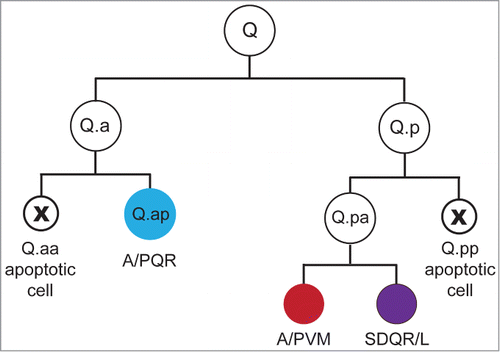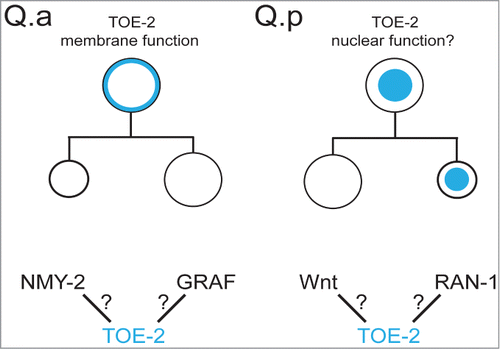Figures & data
Figure 1. The Q lineage. Each Q neuroblast divides to produce 3 neurons and 2 apoptotic cells. Each of the divisions in the lineage occurs along the anterior-posterior (AP) axis. These cells and their descendants migrate in opposite directions along the AP axis to generate the anterior AQR, AVM and SDQR neurons and posterior PQR, PVM and SDQL neurons. The asymmetric placement of the cleavage furrow in the Q.a and Q.p divisions produces daughters of different sizes: a larger neuron or neuronal precursor and a smaller cell fated to die.

Figure 2. (top) We propose that the localization of TOE-2 (blue) to the membrane of Q.a regulates the size asymmetry of the division and localization to the nucleus of Q.p or Q.pp regulates the apoptotic fate of Q.pp. (bottom) Potential interactions that could regulate or mediate TOE-2s role in the Q.a division or Q.pp fate.

